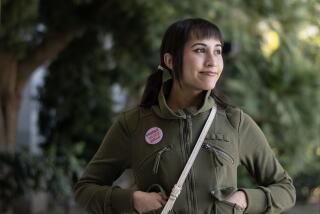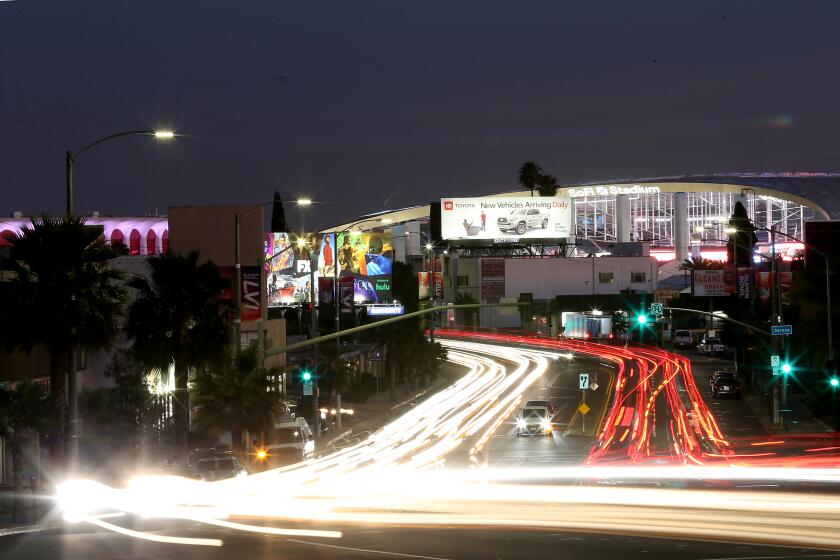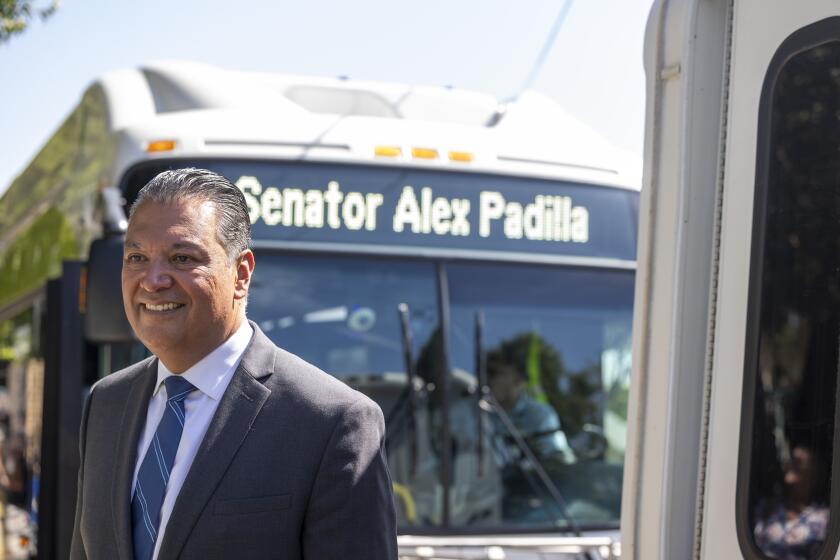Route of System Is Bumpy Issue
Scenes From a Coffee Shop:
Santa Ana Mayor Daniel H. Young sits at a table in The Courtyard on Harbor Boulevard with two reporters. He starts to draw lines with his pen on his napkin. One of the lines represents Main Street. The other is Bristol Street.
Between bites of chicken sandwich, Young explains that he’s been thinking the proposed monorail line from Irvine to Fullerton ought to go north on Bristol Street.
A few months earlier, on another napkin, in another coffee shop, he drew the line up Main Street.
“I’ve changed my mind,” he says. “Going up Bristol is better. . . . There are more opportunities for redevelopment there.”
Several months elapse until June, 1991.
Young, now eating a bagel at the Red Lion Inn on Bristol, doesn’t bother with a napkin. But he says “We’re back to Main Street.”
Is this any way to pick a rail transit route?
Since 1983, officials have known generally where they want to install an urban transit line in Orange County.
But selecting the specific streets the route would run and the station sites is a complex, politically charged process. The choices will influence the success or failure of the project and the pattern of future development. Properties will be condemned or spared depending on the choices made; businesses will flourish or suffer.
From south to north, the route now being studied by the Orange County Transportation Authority and a consortium of six cities starts at the Irvine Spectrum, proceeds to Main Street in Santa Ana, continues north on Main to Katella Avenue in Orange, proceeds west on Katella to Harbor Boulevard in Anaheim, and then shoots up Harbor to the Fullerton Amtrak station.
But not everyone agrees on specifics.
Brea would like an extension. Costa Mesa and Orange have alternative alignments that must be studied. Bruce Nestande, former chairman of the California Transportation Commission, would prefer a system with fewer turns and stops than is currently planned. He would like to see a line that would rapidly transport people from Diamond Bar to jobs in the John Wayne Airport-Irvine area. The main route should not be a “milk run,” Nestande said.
And while officials have a pretty good idea about which cross streets should serve as station locations, they’ve decided to only recommend approximate sites, within a quarter-mile radius of intersections.
Specific station sites won’t be designated by transit planners, partly to insulate them from local political considerations, which are likely to be a factor in each of the cities along the route. In the end, the politicians will decide.
“The major issue is what kind of trip you want to carry,” said Brian Pearson, director of Transportation Authority’s rail program office. “If you want to carry a commute trip, you have to serve the major employment centers, and you then try to include your major recreational and entertainment sites. . . . And then you have to link those with the places where people come from, not just where they’re going to for work, and that’s difficult because the population is so scattered.”
Land use patterns have slowly changed in recent years, with major employment and retail centers concentrating in well-defined areas that have a minimum of 13,000 employees and 10,000 jobs per square mile. Transportation officials have found 13 of these centers, which are primarily in central Orange County near overburdened freeways, Pearson said. By the year 2010, there will be 18 major activity centers, experts predict, each with about 15,000 jobs.
Locating stations properly is the next most critical element, Pearson said. Some employment centers are quite large. Moving a station a few blocks in any direction can make a big difference in ridership “because that’s where people will decide whether to access the system,” Pearson said.
“There’s a rule of thumb,” he added, “that says people will walk from a station for a three-block radius to get to their jobs. Beyond that, you need a secondary distribution system” such as buses and trams that “feed” people into the stations.
There are many considerations that go into planning the transit line that go far beyond the preferences of transportation experts.
One such factor is financing. Private firms will be asked to buy development rights near stations, so their views about station locations may weigh heavily.
And since the system will be elevated, even the shadows cast on nearby buildings by station structures will be studied for their possible negative impact on residents and existing businesses.
“Cost factors, available rights of way, traffic disruption during construction, environmental issues, and what kind of vehicle you want to operate over the guideway all go into the equation,” Pearson said.
“As you can see,” Pearson said, “these are not simple decisions.”
More to Read
Sign up for Essential California
The most important California stories and recommendations in your inbox every morning.
You may occasionally receive promotional content from the Los Angeles Times.






